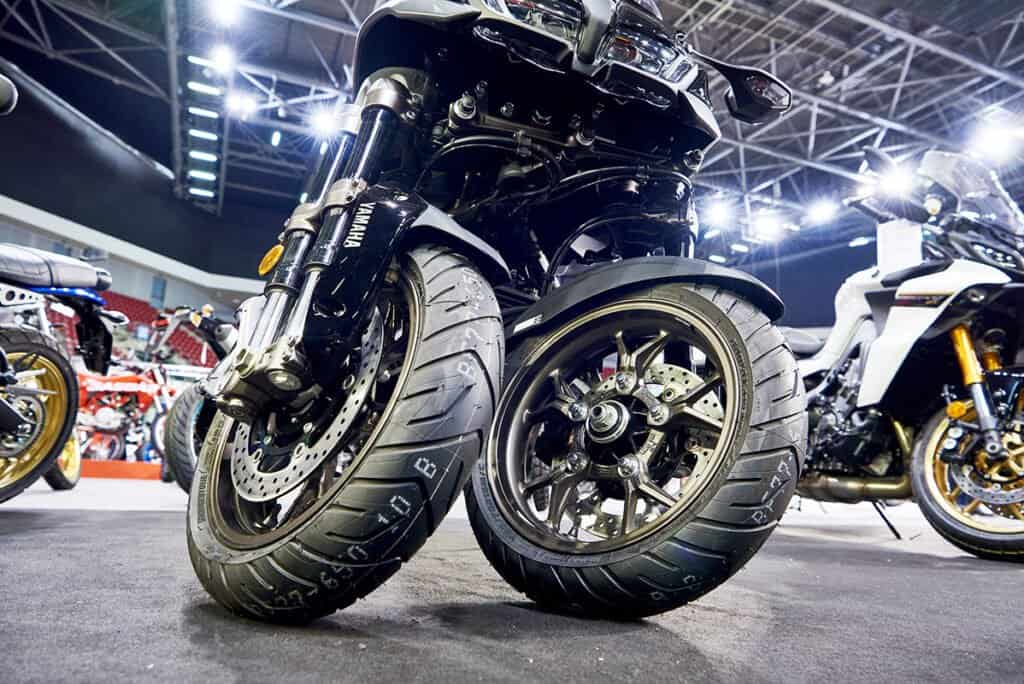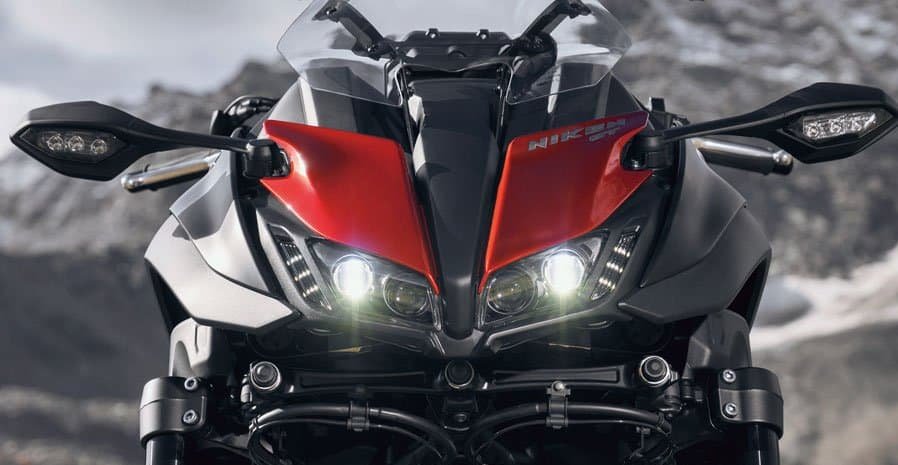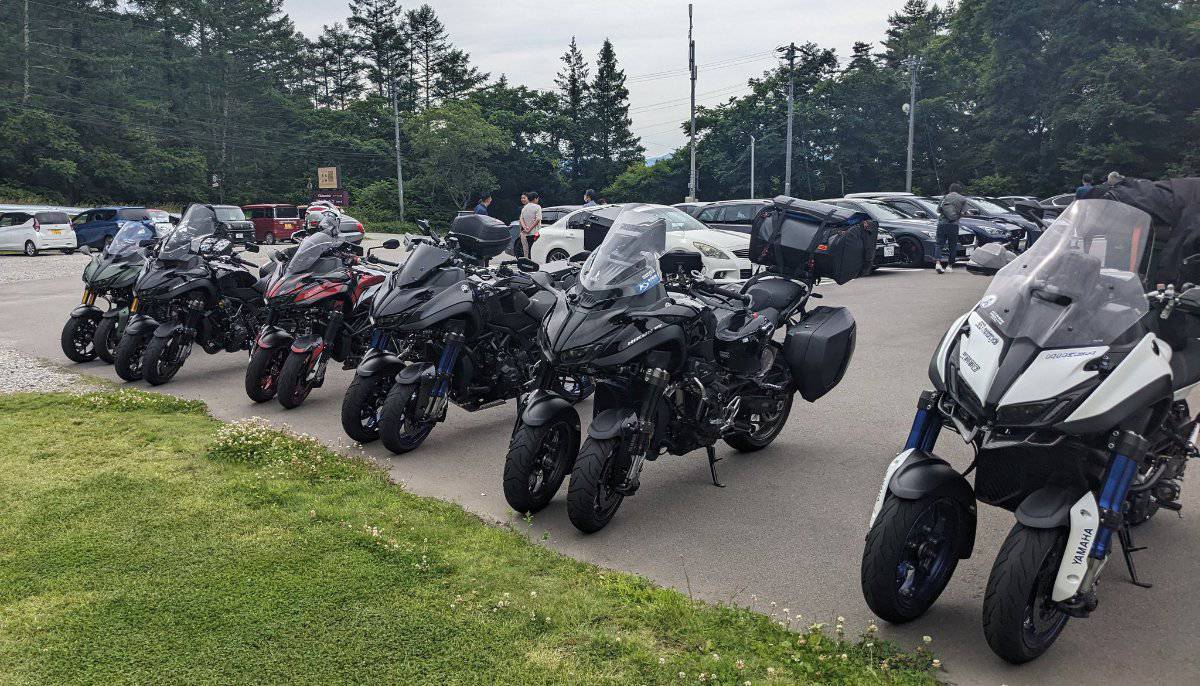The heart of what makes the Yamaha Niken revolutionary is its groundbreaking front-end design. In this article, we’ll take a deep dive into the Leaning Multi-Wheel (LMW) system that gives the Niken its unique character and capabilities.
What is the LMW System?
LMW stands for Leaning Multi-Wheel, Yamaha’s proprietary technology that allows the Niken’s two front wheels to steer and lean in unison. Unlike traditional three-wheeled vehicles (trikes) that remain flat during turns, the Niken leans into corners just like a conventional motorcycle.
This pioneering steering technology ensures that despite having two wheels up front, the Niken maintains the authentic feel and handling characteristics of a traditional motorcycle. Many riders report that once they’re underway, they often forget about the unconventional front end until they encounter their first corner or challenging road condition.
The Engineering Behind LMW
The LMW system’s magic lies in its complex parallelogram linkage design. The Niken features four front forks—two for each wheel. The forward forks contain the actual shock absorbers, while the rear forks act as stabilizers, preventing the wheels from shaking or wobbling.
Here’s a video clip of the LMW system from YAMAHA MOTOR in Japan.
![]()
This sophisticated arrangement allows the front wheels to tilt at the same angle as the motorcycle while maintaining perfect alignment with the road surface. The result is a system that provides enhanced stability without sacrificing the lean angles and cornering feel that motorcyclists love.
Technical Specifications
- Two 15-inch front wheels, positioned 410mm apart (track width)
- Four fork tubes (two per wheel)
- Fully adjustable front suspension
- 110mm front suspension travel
- 20° caster angle
- 74mm trail
- Both front wheels use 120/70R15M/C 56V Tubeless tires
The Benefits of Two Front Wheels
The most significant advantage of the LMW system is the dramatically increased front-end grip. With two wheels up front, the Niken offers approximately 80% more contact patch with the road compared to a conventional motorcycle. This translates to several tangible benefits:
Enhanced Stability
The dual front wheels provide significantly improved stability, particularly during cornering and braking. This added stability inspires confidence in riders, allowing them to push a bit harder in corners or ride more comfortably in challenging conditions.
Superior Grip in All Conditions
Perhaps the most impressive aspect of the LMW system is its performance in less-than-ideal road conditions. Wet roads, uneven surfaces, and even light gravel paths become far less intimidating with the extra grip provided by the dual front wheels.
Increased Braking Power
With two front wheels, the Niken offers enhanced braking performance. The dual 298mm front discs provide powerful, progressive stopping power, with less risk of front-end washout during hard braking.
More Forgiving Front End
The LMW system creates a more forgiving front end that’s less likely to be upset by mid-corner bumps or patches of reduced traction. This makes the Niken particularly well-suited to riders who want to enjoy spirited riding with an extra margin of safety.
The Riding Experience
Riders who have experienced the Niken’s LMW system often describe it as offering the best of both worlds: the excitement and engagement of a conventional motorcycle, with added stability and confidence-inspiring front-end grip.
The system particularly shines in scenarios that would typically challenge a traditional motorcycle:
- Wet or slippery roads
- Uneven road surfaces
- Tight, technical corners
- Light off-road conditions (forest trails, gravel paths)
- Long-distance touring on varying road surfaces
LMW vs. Traditional Trikes
It’s important to distinguish the Niken’s LMW system from conventional three-wheeled vehicles or “trikes.” Traditional trikes typically feature either one wheel in front and two in the rear, or two widely-spaced wheels up front that don’t lean. These designs feel fundamentally different from a motorcycle and require a different riding technique.
The Niken, by contrast, preserves the motorcycle experience. Its narrow track width (410mm between the front wheels) and leaning capability mean that riders can use the same techniques they would on a conventional motorcycle, with the added benefit of enhanced front-end grip and stability.
Conclusion
The Leaning Multi-Wheel system represents one of the most significant innovations in modern motorcycle design. By maintaining the authentic feel of a motorcycle while enhancing stability and grip, Yamaha has created a unique platform that offers advantages for both experienced riders and those returning to motorcycling after a break.
Whether you’re considering a Niken for yourself or simply interested in motorcycle engineering, the LMW system demonstrates how thoughtful innovation can expand what’s possible in motorcycle design.
If you own a Niken, we’d love to hear your experiences with the LMW system in the comments below. How has it changed your riding experience? Share your story with our community!





